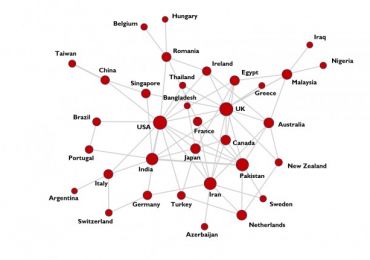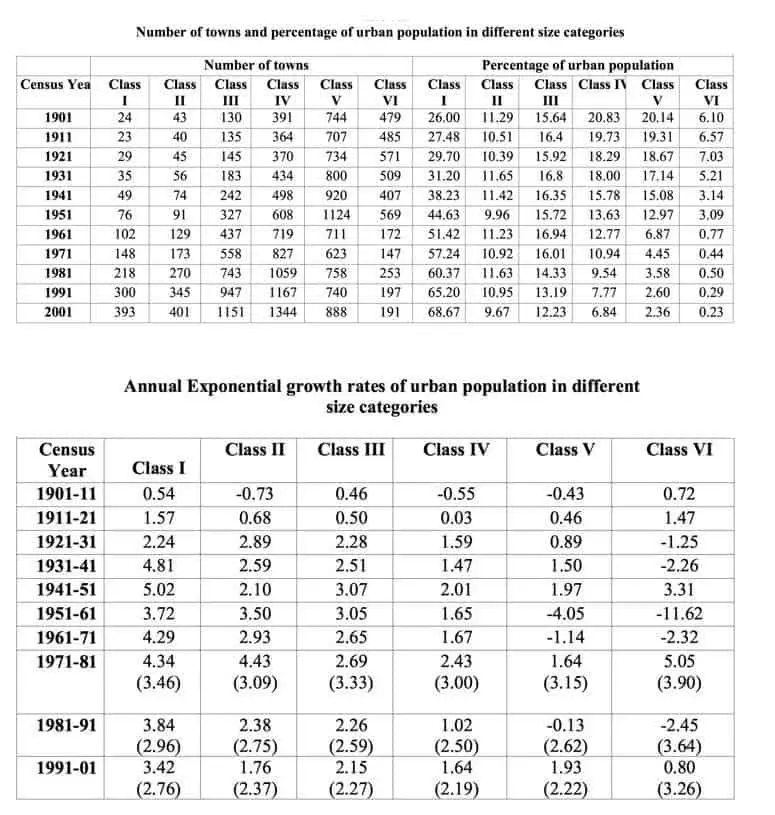What is migration?
Migration
A migration is defined as a move from one migration defining area to another that was made during a given migration interval and that involved a change of residence. The movement which is purely temporary in nature, like, visiting religious places, official tour, medical treatment etc., are not to be treated as migration as they do not involve change of residence.
Any change of residence from one part of village/town to another part of the same village/town will also not be considered as migration as per Indian Census.
Migrant
Migrant is usually defined as a person who has moved from one politically defined area to another similar area. In Indian context, these areas are generally a village in rural and a town in urban. Thus a person who moves out from one village or town to another village or town is termed as a migrant provided his/her movement is not of purely temporary nature on account of casual leave, visits, tours, etc.

Some terms related to migration are:
In-migration: When in migration a person crosses the boundaries of a village/town for the purpose of residing at the place of enumeration is known as in-migration
Out-migration: When in migration a person moves out from the place of enumeration (village/town) to another politically defined area (village/town) for usual residence, this is termed as out-migration.
Internal migration: It includes any movement within the political boundaries of a nation which results in a change of usual place of residence. It may consist of the crossing of a village or town boundary as a minimum condition for qualifying the movement as internal migration. Thus, the concept of internal migration involves implicitly an imposition of boundary lines which must be crossed before a movement is counted as internal migration.
External migration: It includes any movement outside the political boundaries of a nation which usually does not result in a change of usual place of residence. This mainly happens between the nations. This can also be known as international migration.
Migration by place of birth: If at the time of Census enumeration, there is a change in the usual place of residence of an individual with reference to his/her birth place then that is termed as a migration in accordance with ‘birth place’ concept.
Migration by place of last residence: If at the time of Census enumeration, a change in the usual place of residence of an individual is noted with reference to his/her previous usual residence then that is termed as a migration in accordance with ‘last residence’ concept.
Impacts of migration on urban settlements in the context of concentration of population in different towns of India
Different classes of towns in India on the basis of concentration of population are following:
Class 1 1,00,000 and above
Class 2 50,000 – 99,999
Class 3 20,000 – 49,999
Class 4 10,000 – 19,999
Class 5 5,000 – 9,999
Class 6 Less than 5,000
Impact of migration on class 1 towns:
The large towns having population more than 1,00,000 are categorized under the class1 as per census of India. Such towns are generally developed and self-sustainable. These are having all the resources available within the periphery of the town. So this works as a magnet for the outsider areas where these are lack of resources, lack of facilities. So this mainly leads to the in-migration and the population of such towns is continuously increase on higher rates every year as more and more people are daily migrating to such towns.
Due to continuous in-migration the density of such towns is continuously increasing and because of that there is a need to increase the resources with the same rate as the rate of increase of population.
Impact of migration on class 2 towns:
The towns having population more than 50,000 and less than 99,999 are categorized under the class 2 as per census of India. These towns are also having most of the resources within the periphery of the town, but for some these may be dependent to other cities and towns. So these towns also a kind of attraction for many people. The people from rural areas migrate to these towns.
This mainly leads to the in-migration. The population and density is also increasing continuously on higher rates every year. The size of urban settlements is increasing but resources are not increasing on the same rate giving rise to slums and jhuggi-jhopri clusters.
Impact of migration on class 3 towns:
The towns having population above 20,000 and below 49,999 are categorized as class 3 towns. These are small towns and some of the resources are available in these towns but for others there are also dependent on large towns. Most of the people from such towns are working in the same towns but many are going out for work or studies. So this mainly leads to out-migration. So such towns are not having much densification. So the urban settlements are increasing in these towns but not at higher rates. But still there is a need to provide required with the increasing population and densification.
Impact of migration on class 4 towns:
The towns having population above 10,000 and below 19,999 are categorized as class 4 towns. These are very small towns. These are mainly having the facilities which will be able to cater the surrounding rural areas. But for the main employment and other requirements like higher education people have to migrate out. So in such towns mainly out-migration takes pace.6
Impact of migration on class 5 & 6 towns:
The towns having population above 5,000 and below 9,999 are categorized as class 5 towns and those below 5000 population are categorized as class 6 towns. These categorizes mainly consists of villages. In such villages optimum resources are not available. So people have to migrate to big towns for the employment and other needs. Most of the people from these areas migrate out for work and education and the get settled in the big towns. So out migration takes place in such categories.
Impact of Migration on different classes of towns in India
An analysis of the process of urbanization since Independence reveals that it has been large city oriented during colonial as also postcolonial period. This is manifested in a high percentage of urban population being concentrated in class I cities that offer better employment and earning opportunities. This figure has gone up systematically over the past few decades. Partly this is due to graduation of lower order towns into class I category. There is nonetheless adequate empirical evidence that these cities have grown at a distinctly higher rate than the lower order towns. The pattern of growth has remained similar over the past few decades although there is a general deceleration in urban growth in all size categories during eighties and nineties. Importantly, the edge that the class I cities have over class II, III, IV and class V towns in terms of the growth rate has gone up during nineties. The gaps in the growth rates have widened. Urban growth has become more unbalanced as developed states and class I cities, with strong economic base, raising resources through institutional borrowing and innovative credit instruments, have successfully attracted population as also economic activities. There, however, has been a modest decline in their population growth but that can be attributed largely to fertility decline.

The small and medium towns with population below 50,000 have on an average grown at a relatively slower pace during the seventies and eighties. In the backward states, however, these had exhibited rapid growth, similar or even higher than that of the class I cities during sixties, seventies and eighties. Detailed empirical analysis reveals that the demographic growth in these towns was not backed up by manufacturing\ commercial activities or infrastructural facilities in these states. Rural poverty, stagnant agriculture, absence of sectorial diversification etc., therefore, were the factors in explaining their demographic growth. Importantly, during nineties, these Census towns have experienced significant deceleration in their demographic growth. Even their number has gone down during 1991-2001, which signifies some sort or urban crisis in the context of development dynamics in the country.
Slowing down of the rates of RU migration and urbanization and concentration of demographic and economic growth in relatively developed states as well as around a few global centres, thus, seems to be a logical outcome of the new economic policy. There has been a paradigm shift in the process of urbanization, accompanying the programmes of structural reform. Many among the larger cities have been able to corner much of the resources, available for infrastructural and industrial development both from private and public sector, as noted above. The small and medium towns located away from these “global centres of growth”, particularly those in backward regions, have failed in this which explains their low demographic growth.
Read about: What is Counter Urbanisation, What is Migration